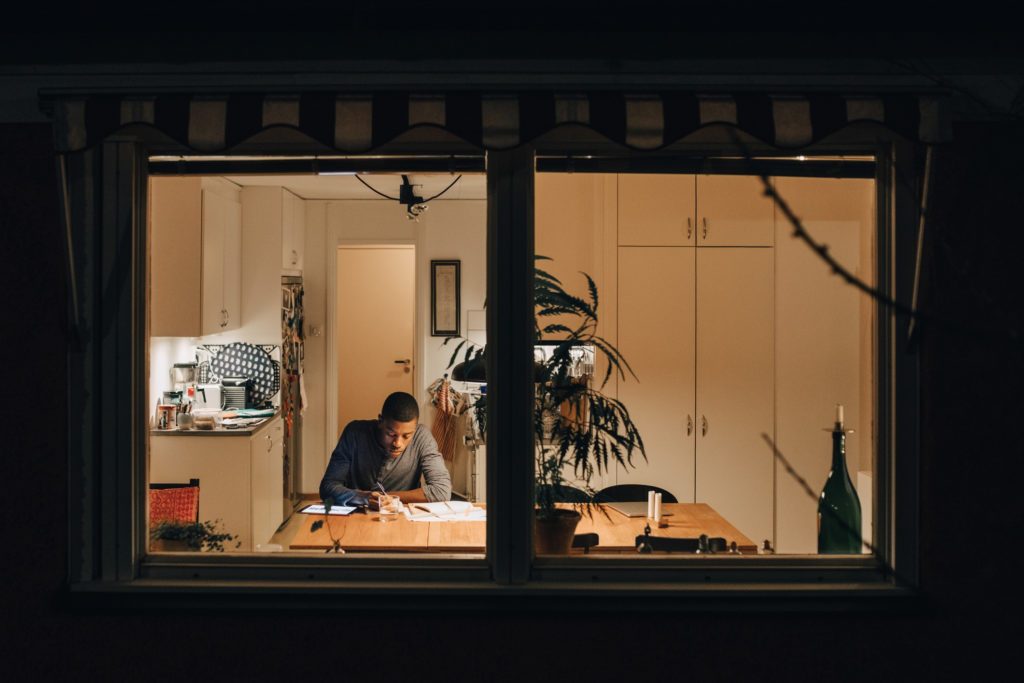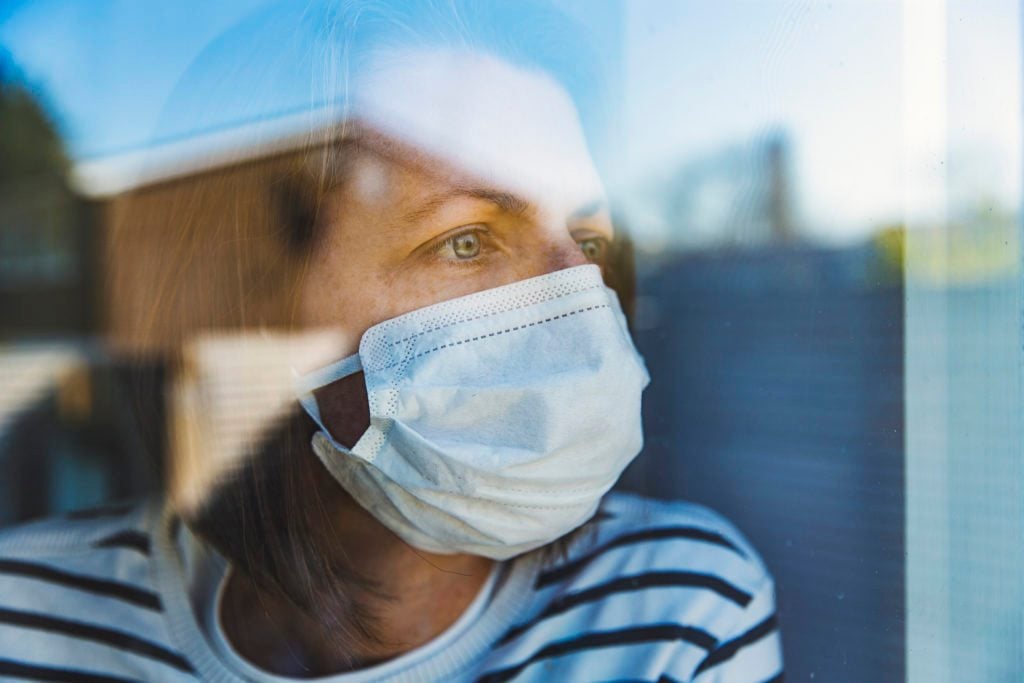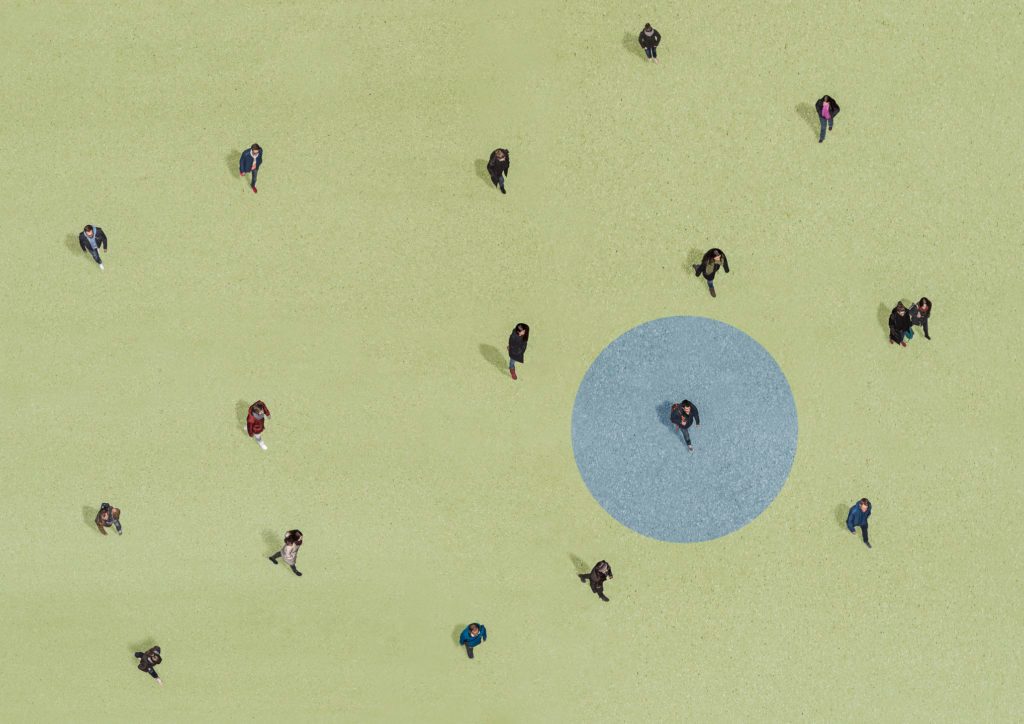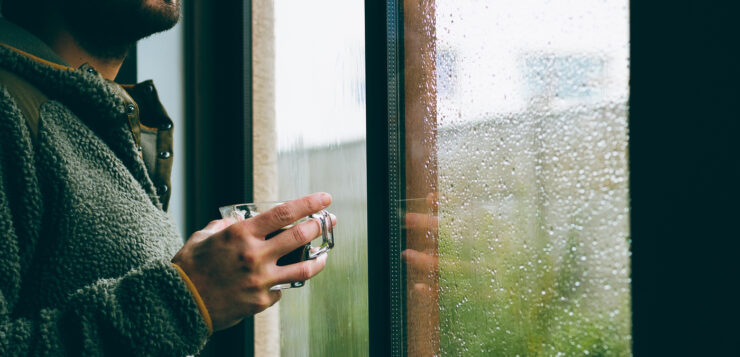Isolation, quarantine, social distancing, and sheltering in place are familiar phrases due to Covid-19. Some are for the sick, others are for the healthy. Do you know the difference?
Along with so many other things, Covid-19 has changed our movements as authorities try to slow the spread of the virus that has now infected more than two million people worldwide, including over 600,000 in the United States. The words and phrases that now dominate our days are quarantine, isolation, and social distancing.
“We know Covid-19 is being transferred person to person so now the best thing we can do to stop that is to essentially isolate ourselves and really cut back on contact,” says Eric Palmer, RN, a lecturer at the Purdue School of Nursing in West Lafayette, Indiana and former Lieutenant Commander in the U.S. Navy Nurse Corps.
But the landscape of coronavirus containment is complicated, with knowledge of the virus changing every day and different jurisdictions issuing different rules and guidance.
In San Diego, 22 people received citations for watching the sunset in violation of a stay-at-home order. In South Dakota, this probably wouldn’t have happened, especially since the governor has not issued a stay-at-home order.
Here, we try to make sense of the patchwork of rules and recommendations

How the virus spreads
Covid-19 is a moving target, with our knowledge of how the virus moves between people constantly changing. “It’s more hearty and robust under conditions we would have thought it would have died,” says Steve Mooney, PhD, assistant professor of epidemiology at the University of Washington School of Public Health in Seattle.
Initially, experts thought Covid-19 passed through respiratory droplets primarily when you coughed or sneezed while in close proximity to another person. These particles were thought to be heavy and so drop or fall to the floor rather than hang out in the air. “If that were true, you could become infected by someone sneezing on you, but you likely would’t be infected by simply standing next to someone who is breathing normally,” says Dr. Mooney. (Can you get coronavirus from sex? Here’s what you need to know.)
The concern now, he adds, is that the virus may transmit via aerosols—smaller particles that stay in the air for longer. One support for this hypothesis is the case of a choir in Washington State, which decided to rehearse together on March 10. Singers thought they were taking plenty of precautions—no hugs, no shaking of hands, and definitely no coughing in anyone’s face—but three weeks later, 45 of 60 choir members who turned up that day had been diagnosed with the virus.
Incidents like that have resulted in a change in the recommendation for wearing masks in public. The CDC now recommends that everyone wear cloth face masks any time there is a situation—like a grocery store or pharmacy—where it’s difficult to stay 6 feet or more from other people. (You can make your own simple face mask at home with this guide.)
What is self-isolation?
Isolation, either in a hospital or at home, is a time-tested public health measure available to slow the spread of Covid-19 by keeping the sick away from the healthy. “Isolation is to separate ill persons who have a communicable disease from those who do not have that disease,” says Krutika Kuppalli, MD, an infectious diseases physician and vice-chair of the Global Health Committee at the Infectious Diseases Society of America (IDSA).
Often the patient is isolated in a hospital room, but with the scope of Covid-19, the lack of medical resources means that many people are being asked to self-isolate at home, the Centers for Disease Control and Prevention (CDC) reports.
Nevada County in California is one example where health officials asked people to self-isolate if they had confirmed or suspected Covid-19. The self-isolation was to continue until they met certain criteria, including that they had been fever-free (without fever-lowering medication) for at least three days, or 72 hours. (Here’s how to prevent the spread of coronavirus at home.)
In addition, others who had a known exposure but no symptoms were asked to self-quarantine, or stay home for 14 days, to see if they developed symptoms.
According to an article in the Journal of Travel Medicine, this is most effective if you know that a person is infected early on. Unfortunately, Covid-19 seems to be transmissible before symptoms appear, making it difficult to identify who is sick and who is healthy, who should be isolated and who should not.
“Quarantine and isolation are two of several kinds of types of community mitigation strategies implemented in public health when we are dealing with an infectious disease for which there is no specific counter measures such as a vaccine or an antiviral drug,” says Suzet McKinney, DrPH, CEO of the Illinois Medical District.

JUSTIN PAGET/GETTY IMAGES
What is a quarantine?
The idea of quarantine is as old as the Bible, when it was mentioned in relation to leprosy (which is now known as Hansen’s disease). The word itself came from 14th century Italy when ships arriving from areas that had the plague were told to anchor away from shore for 40 days (quaranta giorni means 40 days) before docking.
“Quarantine is to separate and restrict the movement of well persons who may have been exposed to a communicable disease,” says Dr. Kuppalli. “They are monitored to see if they become ill.” Quarantines have also been imposed on entire communities. For individuals, they usually last through one incubation period which, in the case of Covid-19 is thought to be 14 days.
As with isolation for sick people, quarantines are best done when cases are detected quickly and contacts of ill patients are traced quickly and quarantined. Depending on the location and the situation, quarantine can be “passive” or more active monitoring of symptoms, according to the National Library of Medicine.
According to the CDC, the federal government can legally impose isolation and quarantine measures to prevent disease spread between countries and states. So can jurisdictions. On April 19, California’s Sonoma County issued an order for “all individuals who have been diagnosed with or suspected to have Covid-19 must isolate themselves.”
Violations are punishable by a fine, imprisonment or both. But as with isolation in the era of Covid-19, quarantine can also be voluntary and probably would include measures like not having visitors.
Canceling large events
One of the earliest changes made after Covid-19 hit the United States was suspension of all professional (and other) sports. Schools have also been closed. Both of these are community strategies, says Dr. McKinney. As is working at home and canceling or postponing conferences and festivals. At other times, there have even been instances of community mitigation strategies that include stopping public transportation. “Covid-19 is the worst pandemic that our country has seen since 1918,” she adds. “We saw the same thing during 1918.”
Different states and jurisdictions have limited gatherings to a certain number of people. The Georgia Department of Public Health, for instance, recommends limiting gatherings larger than 10 people. Hard-hit New York State has prohibited “all non-essential gatherings of individuals of any size for any reason.”

BERNHARD LANG/GETTY IMAGES
Social distancing
The idea here is to reduce physical proximity so as to reduce the likelihood that the virus can spread from one person to the next. Guidelines right now recommend staying at least six feet or two meters away from other people. But the term “social distancing” is a bit of a misnomer.
“The question is if what we’re actually talking about not having your body within six feet of another person’s body, why are we calling it social distancing, especially in an age where it’s easy to be social digitally,” says Kirsten Ostherr, PhD, director of the medical humanities program at Rice University and adjunct professor at the University of Texas-Houston School of Public Health. “Prior to this moment, a lot of people had been complaining that our social lives had moved online and that that was a bad thing.”
Dr. Krutika points out that the World Health Organization (WHO) now emphasizes physical distancing. “We need to maintain physical distance but [WHO] encourage maintaining social connections (connections to friends and family with Facetime or Skype, phone calls). Just because we are not in same proximity with each other does not mean we can’t be connected.”
Sheltering in place
This is another community mitigation strategy used by public health experts. “It means exactly what it sounds like: that you shelter in place, you stay where you are until the threat has passed,” says Dr. McKinney. In the case of Covid-19, it generally means at home and some states have issued “Stay at home” orders. And the orders are in place until cases of disease have peaked and begun to level off, she adds.
There are differences within shelter-in-place rulings regarding what employees and businesses are considered essential. “You’re seeing differences from one jurisdiction to another as to what’s closed and what’s not closed and who’s required and who is not,” says Dr. McKinney.
There are often repercussions to violating these orders. In Illinois, for instance, the first violation brings a warning. The second time could result in a citation, says Dr. McKinney.
In a situation like Covid-19, though, more than one community mitigation strategy is required. “You can’t implement just one,” says Dr. McKinney. “It has to be a clear and targeted but layered approach to community mitigation. We can’t go back to normal so quickly.”





